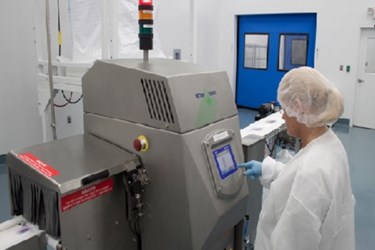Implementing A Food Product Inspection System? Avoid These Traps

By Melissa Lind, contributing writer
The food production industry has lagged behind in the development and implementation of uniform standards. It may be confusing to know how to approach newly developed processes which may come from different sources and employ different technologies.
A lack of comprehensive standards has been a weak spot in ensuring food quality. Recent crises involving food contamination has forced the issue to the front of regulatory minds, but some manufacturers and processors may be tempted to take shortcuts when implementing food inspection practices. Below are five traps to avoid that will help ensure product standards will comply with current and upcoming regulations.
Failure To Look Beyond The First Set Of Standards
Different agencies — from local governments to international agencies — are all issuing standards, some of which are more comprehensive than others and some of which may have some specifics that others are lacking. Some manufacturers and processors have already set up systems to comply with the first set of standards that were enacted. Others may have set up systems to comply with the standards that seem the most comprehensive or complex.
Every member in the food supply chain must evaluate each set of standards to ensure compliance. Compliance with one standard won’t necessarily ensure overall compliance. Food processors and manufacturers need to develop a comprehensive process for the company based on regional and food-specific standards from all relevant agencies.
Failure To Individualize Inspection Systems
When it comes to food safety inspection and quality assurance, one size does not fit all. Each food line may require a different type of inspection system. Some food products will benefit from X-ray detection while some will require metal-detection systems. The individual food product that is being produced must be evaluated on a food and process specific basis. This type of issue may impact the investment decisions you make and it may also mean that you must make multiple investments.
Food Safety Regulations Are Steering The Evolution Of Product Inspection
In addition, even within each inspection system, you may need to install “extras” to upgrade from the technology manufacturers standard offerings. It is a good idea to check out all of the potential assets of any system and plan for contingencies.
Using Manual Rejection As A Stand-Alone Inspection Process
We like to believe that humans are better than machines. This is not unique to the food industry, but insidious in most processes. As food inspection and other manufacturing industries have long relied on sharp eyes and quick hands to cull out rejects, it is difficult for some to accept the need for technology investment.
X-ray systems, metal detection, and other technologies ensuring product uniformity can do jobs that people just can’t do. This doesn’t mean that you should get rid of manual rejection — it just means that you need more. Humans can’t see through packaging, can’t judge weight and volume as accurately as most machines, and can’t detect tiny particles that may slip through. In today’s food industry, automated inspection in addition to manual inspection is essential.
Case Study: How A Swiss Chocolate Maker Advanced Its QA With Accurate Check Weighing
Failure To Continue To Test Inspection Systems
Just as your car should be tested regularly for safety and emissions, you food inspection systems need to be tested regularly. Inspection systems are installed, tested, adjusted, and tested again before put into operation, but they need regular checks and calibrations to ensure they are operating as designed. One small slip can make a big impact on a company’s bottom line in terms of recall cost and loss of customer confidence. Manufacturers and processors need to implement a process of routine testing of not only the production line, but also the automated systems which check for quality.
Failure To Train Employees On Food Safety Regulations
Even line processors need to know what current and upcoming regulations are. It may not seem like it is worth the time, as standards are evolving, but it is. Your employees need to have the knowledge of what the regulations are and when they change in order to help your company implement those standards. The employer gets a return on investment for training costs as the food quality goes up and misses are avoided. The company also gets a boost in employer productivity and loyalty. Educating your employees to the existence and importance of standard adherence can give a boost to morale as the employee may feel as an important piece in the food-production process rather than a factory worker. By providing effective training, you can increase the personal pride an employee takes in his own job performance. He is no longer there to collect a paycheck, his job is important to the company and the public.
There are multiple choices when it comes to food quality inspection. From the type of system you choose, x-ray to metal detection, your investment can go to waste if you don’t safeguard your food production against common misbeliefs.
